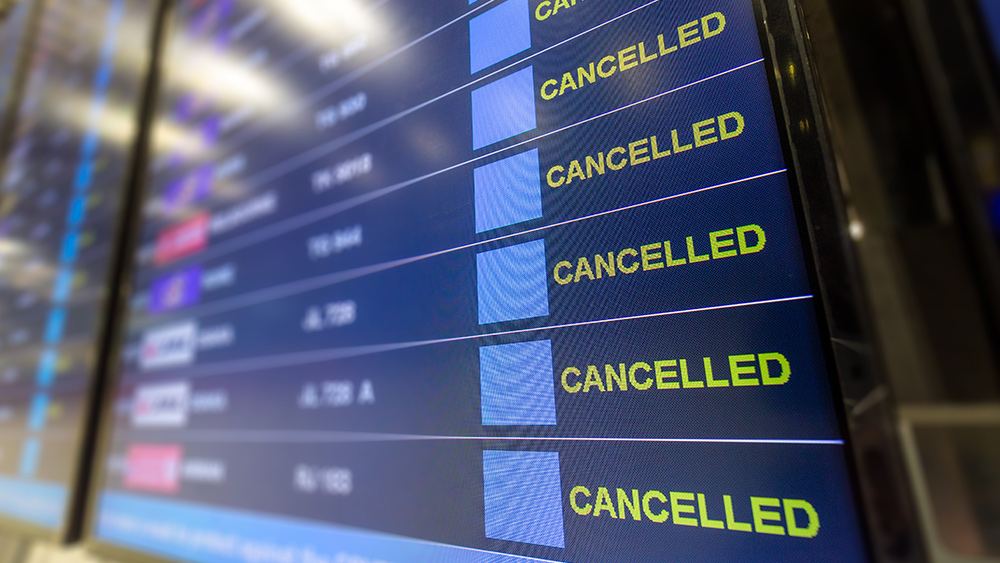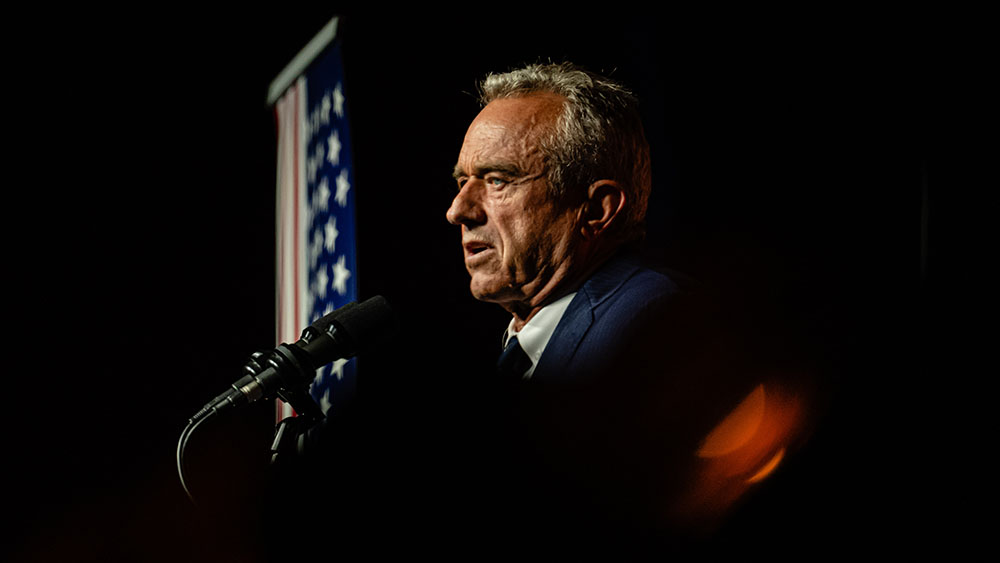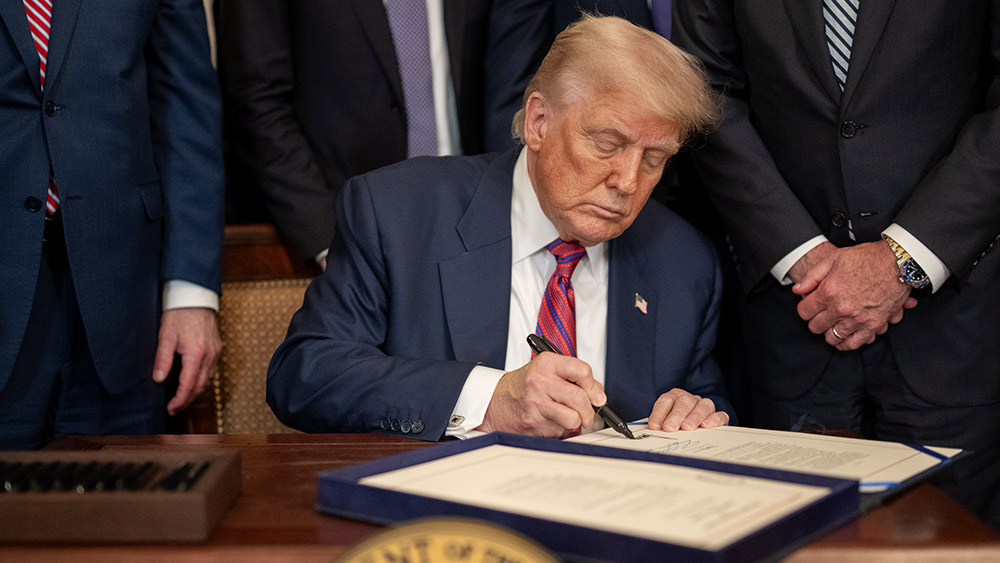 Parler
Parler Gab
Gab
- Nearly 1,000 U.S. flights were cancelled following the government shutdown.
- The record 40-day shutdown forced air traffic controllers to work without pay.
- A staffing crisis caused significant absences, straining the aviation system.
- Flight disruptions are expected to persist for days as operations slowly recover.
- The crisis highlights the fragility of essential systems due to political failure.
The human cost of political failure
The core of the crisis lies with the 13,000 air traffic controllers who were forced to work without pay for over a month. These dedicated public servants, who were already part of an overworked and understaffed system, faced immense financial pressure and stress. Federal authorities reported a significant uptick in absences as controllers, fatigued and strained, were compelled to call off work. This essential workforce was stretched to its breaking point, proving that no system can function when its key components are devalued and disrespected. Henry Harteveldt, an airline industry analyst, had previously warned of the inevitable outcome, stating, "There's going to be extensive disruption across the entire nation’s air transportation system." His prediction has proven tragically accurate. The Federal Aviation Administration was forced to order flight cuts at 40 of the country’s busiest airports in a direct result of the safety risks created by the staffing crisis.A slow path back to normalcy
While the funding bill has been signed, aviation experts warn that flight disruptions will persist for several days as the system works to restore normal operations. The process is not as simple as flipping a switch. Ahmed Abdelghany of Embry-Riddle Aeronautical University explained that recovery is "likely to vary across airports and carriers, often unfolding on a case-by-case basis over several days." Airlines must now reassess the complex flow of aircraft and crew that was thrown into disarray. The situation improved slightly on Wednesday, with over 900 cancellations compared to more than 2,900 on Sunday. Air traffic control absences accounted for just 1% of delays on Tuesday, a significant drop from the 5% average before the shutdown. Transportation Secretary Sean Duffy stated that air traffic controllers will receive 70 percent of their back pay within 24 to 48 hours, a move aimed at stabilizing the beleaguered workforce. Some industry leaders expressed cautious optimism. Delta Air Lines CEO Ed Bastian told CNBC, "By the weekend, I think things should be in good shape." Following the funding bill's passage, Delta said it was looking forward to bringing operations "back to full capacity over the next few days." The airline expressed gratitude to the federal workers who labored without a paycheck to keep the skies safe. Yet the underlying problems predate this shutdown. The FAA has been grappling with a chronic air traffic controller shortage. Prior to the shutdown, controllers were already consistently working six days a week on mandatory overtime. Robert Mann, an airline industry consultant, noted that hiring and training new controllers is a time-consuming process with a high attrition rate, a challenge only magnified by recent events. This episode is a sobering lesson in the real-world consequences of political brinksmanship. The travel chaos represents more than just inconvenient delays; it is a symptom of a system pushed to its limits. As the country moves forward, the disruptions in the skies stand as a clear testament to the fragility of the systems we rely on and the profound impact of government failure on the liberty and daily lives of American citizens. Sources for this article include: YourNews.com USAToday.com CBSNews.com CNBC.comUAE and U.S. forge AI-powered drone alliance amid growing military tech race with Iran and China
By Kevin Hughes // Share
Serbian President Vucic: War between NATO and Russia is now INEVITABLE
By Ramon Tomey // Share
Israel has demolished over 1,500 Gaza buildings since ceasefire, satellite data reveals
By Belle Carter // Share
Belgium’s anti-drone police unit stood by while drones shut down airports, embassy says
By Patrick Lewis // Share
UAE and U.S. forge AI-powered drone alliance amid growing military tech race with Iran and China
By kevinhughes // Share
Avocado: The skin superfood for enhanced elasticity and firmness
By newseditors // Share
A systemic breakdown on the nation's highways as California cancels 17,000 CDLs
By willowt // Share
A temporary truce: Trump ends historic 43-day government shutdown
By willowt // Share









